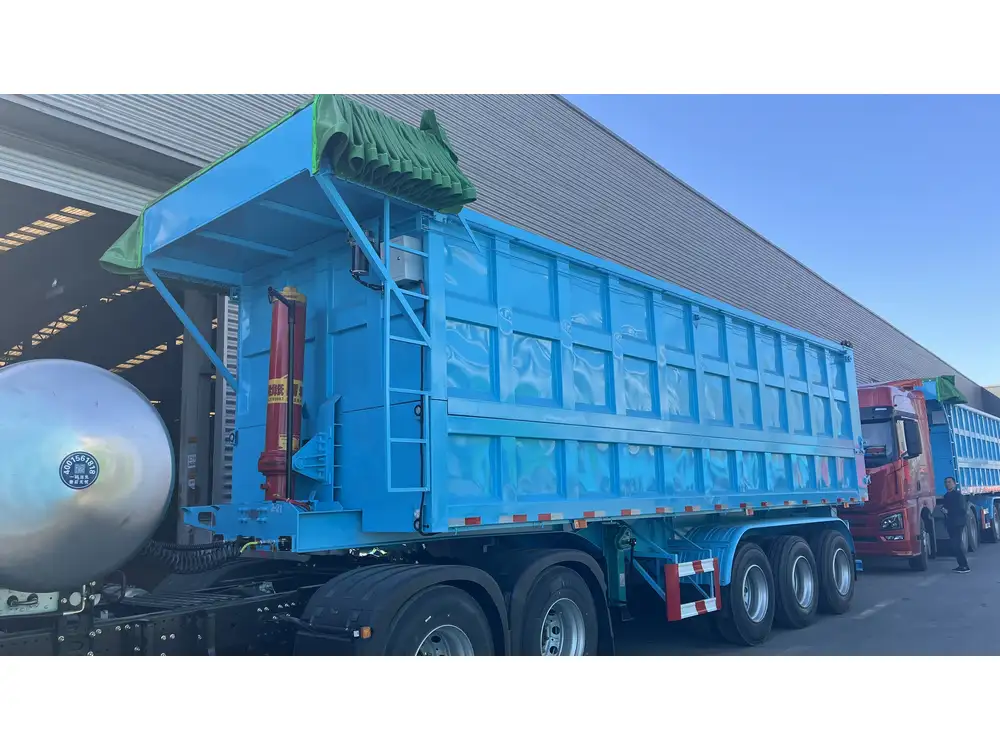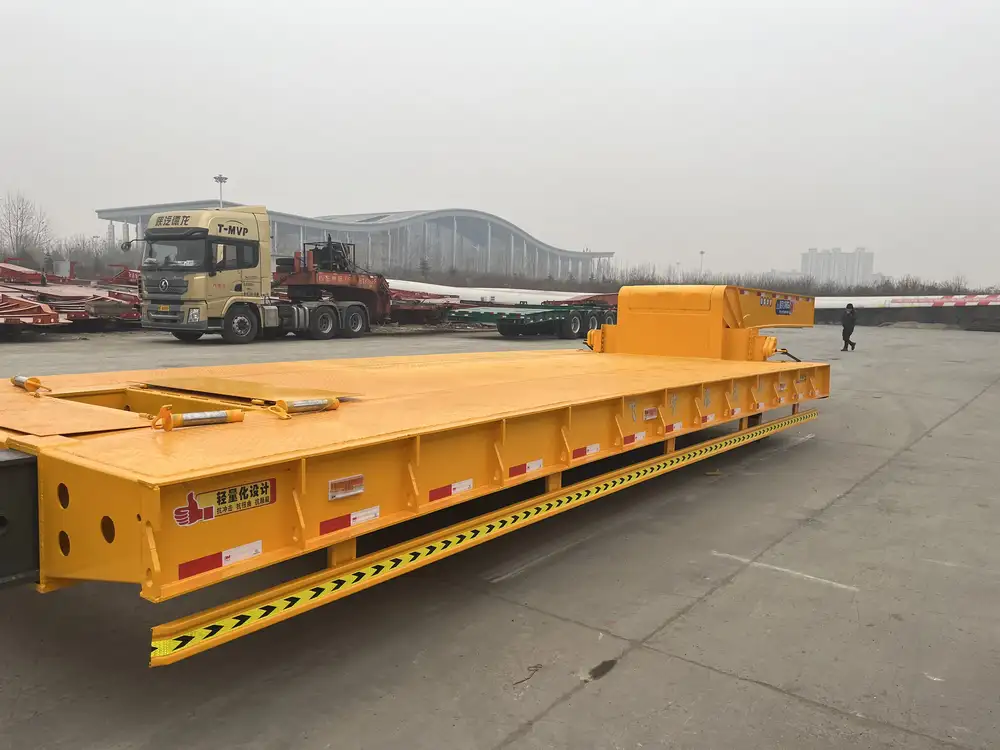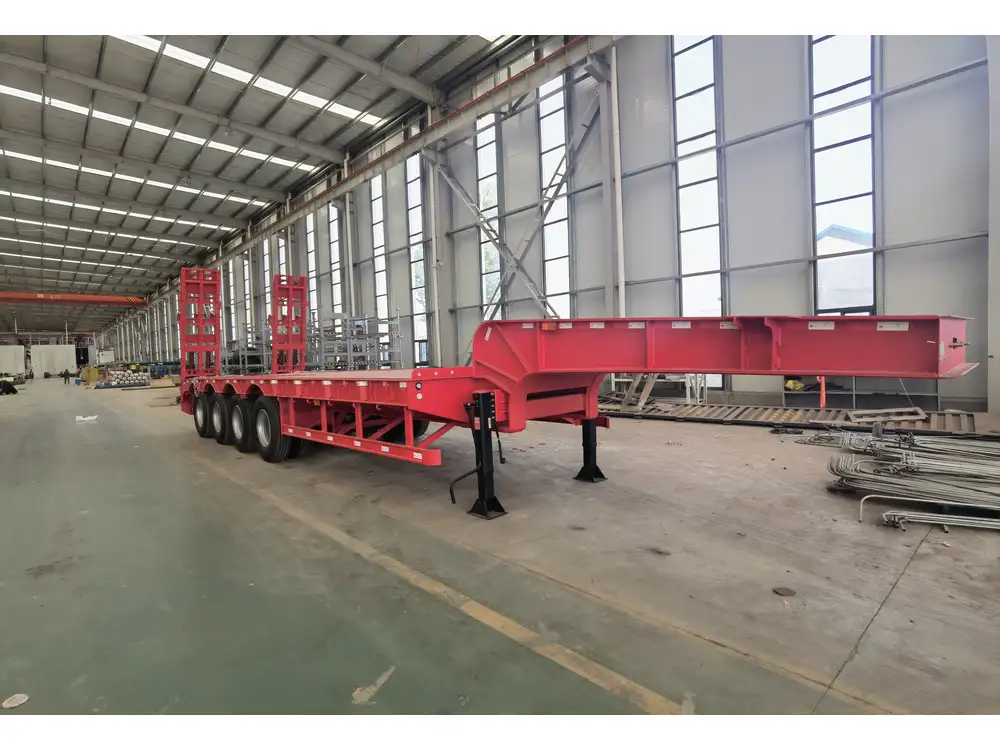In the competitive market of semi-trailer manufacturing, understanding pricing strategies is crucial. Whether you are selling dump trailers for construction projects or landscaping services, knowing how much to charge can greatly impact your profitability and customer satisfaction. This detailed guide will explore various factors influencing pricing, provide insights into market trends, and suggest effective strategies for determining the right price for your dump trailers.
Understanding the Dump Trailer Market
Market Analysis
Before setting a price for dump trailers, it’s essential to analyze the market. This includes understanding the competition, identifying target customers, and recognizing demand fluctuations. Market analysis can be segmented into several key areas:
Competitor Pricing: Researching competitors’ prices can provide benchmarks. High-end manufacturers may charge a premium for advanced features, while budget manufacturers may compete on cost. Determine your position in the market—are you providing value through superior quality, innovative designs, or after-sales support?
Target Audience: Identify who your primary customers are. Are they individual contractors, small businesses, or large corporations? Each segment has distinct needs and purchasing power, which can influence pricing strategies.
Economic Factors: Economic conditions can significantly impact pricing strategies. During economic downturns, customers may seek more budget-friendly options, while booming economies often allow for higher price points due to increased demand for construction materials and services.

Demand and Supply Dynamics
Understanding demand and supply dynamics is crucial in setting prices for dump trailers.
Seasonal Demand: Dump trailer demand may spike during specific seasons, especially in construction and landscaping. Monitor local trends to understand when to capitalize on higher demand periods while setting competitive prices.
Supply Chain Considerations: The availability of raw materials, manufacturing capacity, and shipping logistics can affect costs. Fluctuations in material costs (like steel or aluminum) should be reflected in the pricing. A well-managed supply chain can minimize disruptions and keep your pricing stable.
Key Factors Influencing Pricing Strategies
Several core factors determine the prices manufacturers should set for dump trailers.
1. Cost of Production
The cost of production forms the foundation of pricing strategy. This includes:
- Material Costs: The price of high-quality steel, aluminum, or composite materials used in dump trailer construction.
- Labor Costs: Wages, benefits, and overhead involved in assembling the trailers.
- Manufacturing Overhead: Utilities, rent, equipment depreciation, and other indirect costs related to production.

2. Trailer Specifications
Different specifications can affect pricing, including:
| Specification | Impact on Pricing | Description |
|---|---|---|
| Capacity | Higher capacity, higher price | Trailers that carry more weight typically cost more. |
| Dimensions | Size matters | Longer and wider trailers usually require more material and labor. |
| Material Quality | Premium materials increase cost | Higher durability or specialized materials can raise overall costs. |
| Customization | Custom features add costs | Personalized options can justify higher price points. |
3. Marketing and Branding
Brand perception plays a crucial role in pricing:
- Brand Reputation: Established brands can command higher prices due to customer trust. Investing in brand building can thus allow for greater profit margins.
- Marketing Presence: Active marketing can justify prices through perceived value. Showcase unique features like strength, utility, or aesthetics to attract premium customers.
4. After-Sales Service
Effective after-sales service can enhance customer satisfaction and loyalty, allowing you to set higher prices. Consider offering:
- Warranties: Longer warranty periods can justify a higher price.
- Maintenance Services: Offering service packages can provide customers with peace of mind, creating added value.

Pricing Strategies to Consider
Several pricing strategies can be employed when determining how much to charge for dump trailers.
1. Cost-Plus Pricing
This straightforward strategy involves calculating the total production cost and adding a markup percentage to ensure profit. For example:
- Cost of trailer production: $10,000
- Desired profit margin: 20%
- Selling price = Cost + (Cost × Profit Margin) = $10,000 + ($10,000 × 0.20) = $12,000
2. Value-Based Pricing
This approach assesses the perceived value to the customer rather than solely focusing on cost. Research what your customers value and price accordingly. A trailer with advanced safety features, for instance, may command a premium price.

3. Dynamic Pricing
Adaptive pricing allows adjustments based on real-time market demand, competitor prices, or supply issues. Using technology and data analytics can help optimize prices based on these factors.
4. Penetration Pricing
If entering a new market, consider lower initial pricing to attract customers quickly. As you build a customer base, gradually increase prices.
5. Price Skimming
Pricing high initially (for premium features) and gradually lowering it over time can maximize revenue from early adopters and attract more cost-sensitive customers later on.

Additional Considerations
Customer Feedback
Gathering feedback from customers regarding pricing can provide critical insights into their willingness to pay. Conduct surveys or have direct discussions, asking them about their expectations and previous purchasing experiences.
Competitor Monitoring
Ongoing monitoring of competitors is vital. Price adjustments based on competitors’ actions can keep your offerings competitive without undervaluing your trailer’s features.

Promotions and Discounts
Occasional promotions and discounts can stimulate interest and attract new customers. However, use them cautiously to avoid devaluing your brand.
Financing Options
Offering financing options may make higher-priced models more accessible to customers. This consideration can significantly expand your customer base and contribute to sales growth.
Case Study: Pricing in Action
To illustrate the complexities of determining prices for dump trailers, let’s look at how one manufacturer, “XYZ Trailers,” navigated these waters.

Scenario
XYZ Trailers produced heavy-duty dump trailers, priced initially at $15,000 based on direct costs. After conducting market research, they discovered competitors were offering similar trailers at $13,000 but lacked customer service and warranty options.
Adjustments Made
Enhanced features: XYZ introduced reinforced structural integrity and superior axles while justifying a price of $14,500, remaining competitive while emphasizing durability.
Marketing Focus: XYZ launched a targeted campaign showcasing their longer warranties and excellent customer service, appealing to reliability-conscious customers.
Dynamic Strategy: Observing strong spring demand, they temporarily reduced prices to $13,800 for that season, driving sales and clearing inventory effectively.
Results
These efforts led to a 30% increase in sales in the first year, reinforcing the importance of a flexible pricing strategy aligned with market dynamics.

Conclusion
Determining how much to charge for a dump trailer involves analyzing various market and internal factors, followed by choosing the right pricing strategy. By considering production costs, the competitive landscape, customer preferences, and the overall economic environment, manufacturers can set optimal prices that reflect true value while ensuring profitability. The right approach not only enhances revenue streams but also builds long-lasting customer relationships based on trust and satisfaction.



